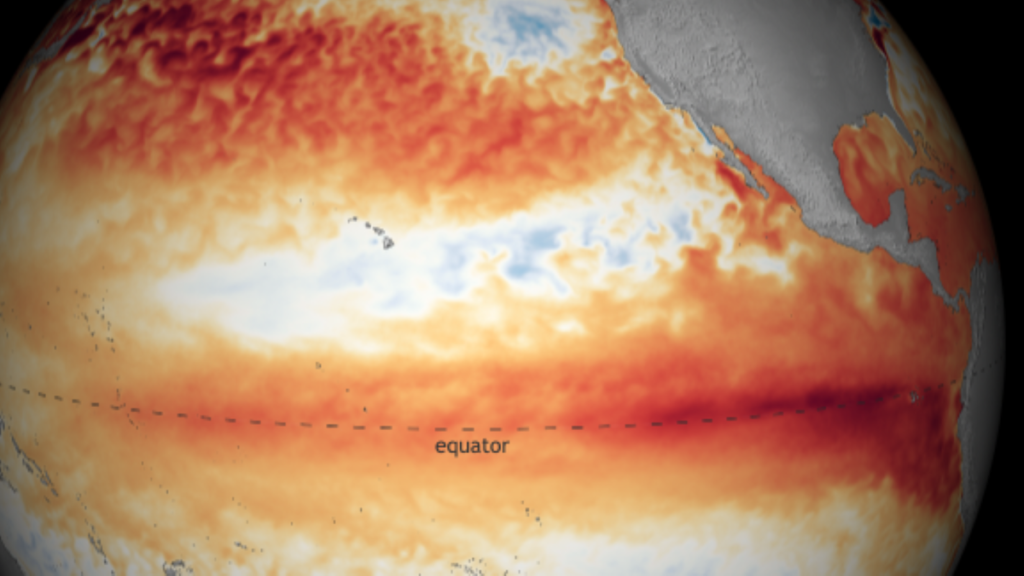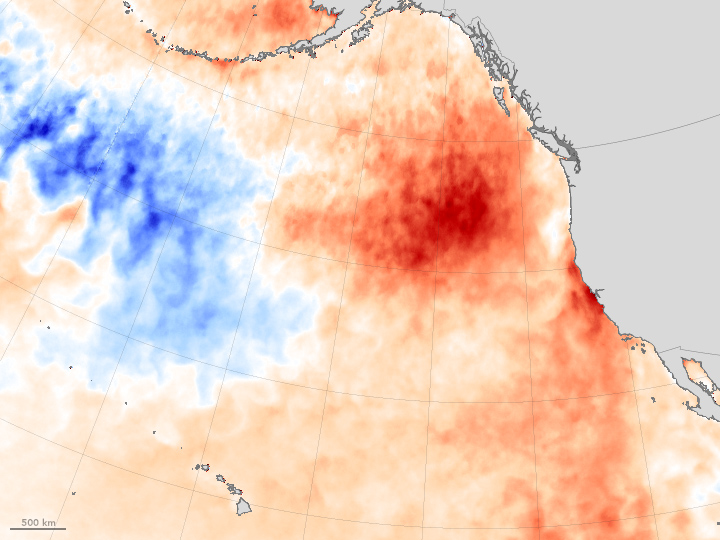Pacific’s Large Warm Water Mass Could Be Influencing Unusual Behavior in El Niño Patterns
El Niño is currently active and is anticipated to maintain its “strong” presence throughout the winter. However, its impact on U.S. weather patterns hinges on the behavior of an unusually warm mass in the western Pacific, according to experts.
A peculiar warm water anomaly in the western Pacific is causing this year’s “strong” El Niño to exhibit unexpected behavior, as reported by The Washington Post.

Situated in the west-central Pacific near the International Dateline, the warm blob is challenging typical El Niño patterns, according to Paul Roundy, an atmospheric science professor at the University of Albany. Traditionally, El Niño induces warming in the eastern tropical Pacific, influencing global atmospheric conditions and weather phenomena. Despite the anticipated strength of this year’s El Niño, experts note a distinctive atmospheric response, deviating from patterns observed in recent robust El Niño events.
In a usual El Niño scenario, warm waters in the eastern tropical Pacific heat the air above, causing it to rise. However, this expected pattern is disrupted, with rising air occurring in the western Pacific instead, potentially suppressing the typical rising motion in the east. The warm blob in the western Pacific contributes to increased tropical rain, diminishing rainfall intensity farther east. This is attributed to the descending motion of air from the west Pacific thunderstorms, drying the atmosphere in the east, as explained by Roundy.
Anomalies in El Niño’s behavior this year could be linked to the lingering effects of a rare “triple dip” of La Niña events, El Niño’s cold counterpart. Over the past three years, La Niña has sustained a cooling effect in the equatorial and eastern tropical Pacific. According to meteorologist Todd Crawford, this cooling effect may not have completely dissipated, contributing to El Niño’s unusual characteristics. Additionally, human-induced climate change, resulting in elevated ocean temperatures, is proposed as a factor influencing the atypical warmth observed in the western Pacific, as reported by The Washington Post.
As we’ve discussed extensively in our recent client reports and Webinars, while ocean temperatures are suggestive of a strong El Nino event, the atmospheric response in the central/eastern tropical Pacific looks nothing like other recent strong El Nino events. Here, you can see… pic.twitter.com/grq94a1BD8
— Todd Crawford (@tcrawf_nh) November 8, 2023
The National Weather Service, in its latest advisory, indicated that robust El Niño conditions might persist throughout the Northern Hemisphere winter and extend until spring 2024. The advisory, released on November 9, suggests a 35% likelihood of the event reaching a “historically strong” status between November and January. The advisory clarified that while strong El Niño events enhance the chances of climate anomalies related to El Niño, they do not necessarily guarantee pronounced impacts.
According to the Washington Post, El Niño winters typically witness the accumulation of warm air masses across Alaska, western Canada, and the northern United States, while cooler and wetter conditions prevail in the southern states. Despite the presence of the warm blob, similar conditions may still manifest this winter, as suggested by Roundy. He mentioned that the interference from the warmth in the western Pacific seems to be diminishing, and the emergence of a warm water body to the east of the International Dateline might induce heavier rainfall in that region.
Roundy also pointed out that a burst of westerly winds could potentially push the warm water atop the blob towards the eastern Pacific. This movement could expose cooler layers of water beneath and, in turn, foster the emergence of more typical strong El Niño signals during the winter.
This article is republished from LiveScience under a Creative Commons license. Read the original article.
Do not forget to share your opinion with us to provide you with the best posts !




0 Comments